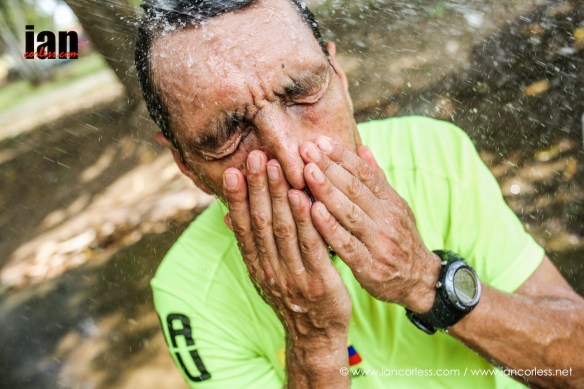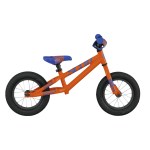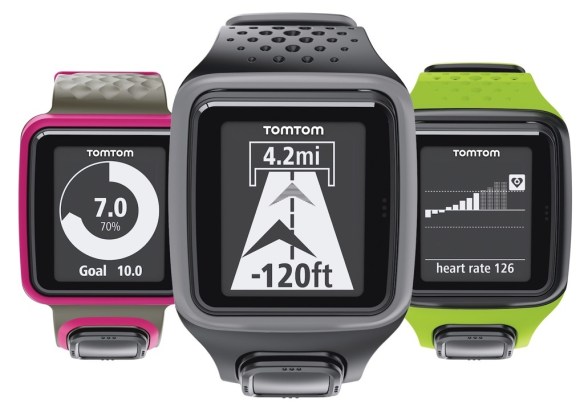
Cycling is a great addition to your run training plan and if done correctly, you will see your fitness, strength, speed and recovery improve. Before you do anything, you need a bike and importantly a bike that s the right size and one that fits you…
Get this wrong and any benefits from cycling will be eroded away with potential injury and discomfort.
Bike fitting and bike size are two different things. Don’t confuse them. Before you can do one, you must do the other, so, getting the correct size bike is imperative. This is not complicated. For the purposes of all our articles we are referring to road cycling and as such all our reference points will relate to a road bike.
When purchasing a bike, geometry is important, this relates to the angles that are used when constructing the frame. In simple terms you have comfort geometry and race geometry. The picture below shows the difference.

Comfort geometry will be a little easier on your lower back and as the name suggests, you may well be more comfortable on longer rides. Race geometry is longer and more aggressive. You don’t need to be a racer for race geometry. The choice is yours.
Niandi’s note: Male and female specific bikes are available, however, many ladies purchase a male bike. So, what is the difference? Many ladies have longer legs and a shorter torso; so, a female specific bike can be a good consideration. In real terms, this will mean the bike will have a shorter top tube (this affects the reach to the bars) and the seat tube angle will be steeper. This all combines to more comfort. In addition, many brands also make female bikes in smaller sizes (smaller then male sizes) but with classic male geometry. Ladies, I am pretty sure you know your morphology and what you want, so choose what is right for you.

Scott Sports say: SCOTT aims high when it comes to the comfort and ergonomics of a product such as the Solace. Therefore a women’s specific geometry for the Solace Contessa lineup has been developed. A 10mm shorter toptube combined with a 10mm longer headtube take into account the different proportions of women and offer a perfect fit for female road cyclists.
As a cyclist, you connect to the bike via five key and integral points:
- Saddle
- Left pedal
- Right Pedal
- Left side of the handlebar
- Right side of the handlebar
A good bike retailer is integral to ensuring that you purchase the correct size bike. For example, we have two friends, A & B. Friend A is the same height as friend B… lets say, 5ft 9”. Friend A rides a 52cm bike therefore friend B assumes that he/she will ride a 52cm bike. Is that correct?
NO!
Why you may ask? Bike sizing is determined by your inside leg (and many other aspects) but ultimately; inside leg is a great starting point. At 5ft 9”, friend A has an inside leg of 32” and he/ she rides a 52cm bike whereas friend B has a 31” inside leg and therefore rides a 50cm bike.
If in doubt, it is always better to have a bicycle that is a little too small than too large as later when you come to bike fitting you can make the necessary adjustments.
Your aim is to have a connection with the bike so that you almost don’t feel the bike. I like to call this, being ‘at one’ with the bike. When you have the size and the fit tweaked to your needs, cycling is a wonderful thing.
Remember, a bike shop is interested in selling bikes. They want YOU to purchase a bike, so, although you will rely on the knowledge of professionals in the store, we can’t emphasize enough to find a retailer with a good reputation. SALE bikes are always a great way to get a quality bike at a good price but be careful… don’t let a great deal make you make the wrong decision.
Use this diagram below to gauge some key measurements in regard to what will be the correct size bike for you.

Completing the above sheet will provide some measurements that you can then apply in regard to narrowing down what will be the correct bike size for you.
Here are two spec sheets provided by SCOTT, firstly male:

and female:

Having knowledge and information prior to attending a bike store will not also make your search more focused but it will also ensure that the bike store staff realise they are dealing with someone who knows what he or she wants.
Lets assume you have your bike; it’s the correct size, now it needs to fit you!

Bike Fitting
Bike fitting is a precise art and can often be tweaked and tweaked before one finds the perfect decision. Companies exist who perform ‘bike fitting’ and this may be something you’d like to consider? It does depend though on your budget.
If you are going to fit yourself to your bike here is a simple guide.
A bike has three key points:
SADDLE:
Just because your bike came with a saddle, it does not mean it’s the correct saddle. Ladies in particular will agree here. Try and try and find the perfect saddle for you. It’s a time investment but well worth it and your bum will thank you for it too.
Niandi’s note: Please consider that a male saddle may well suit a woman and woman’s saddle may well suit a man.
Once you have the perfect saddle for you, you need to position the saddle with three key factors considered:
- Saddle height
- Saddle tilt
- Saddle fore and aft position
Saddle height is straightforward really but we see so many cyclists with a saddle too high or too low. Get this wrong and you not only loose power but you risk injury.
Sit on your saddle and we recommend you take the weight of one leg by placing your foot on a stool or something similar. You need your pelvis to be level. This is important! Lower your free leg and place your heel on the pedal. Drop the pedal with your heel on it to the 6 ‘o’ clock position. Now slide your foot back with the ball of your foot over the pedal. What are you looking for? Well, you should ideally have a slight bend in your knee. If not adjust the saddle height up or down as appropriate. Make sure you have your cycling shoes on with the cleat attached (more on that later). You don’t want your hips to rock from left to right when cycling, so, fix the saddle in what you consider to be ideal position, go for a spin and then check. Spend time on this to get it right.
Saddle tilt may be adjusted on all saddles. Many consider a ‘level’ saddle to be optimum but why? For sure it will work for some, however, we are all unique. Personally, both Niandi and myself tilt our saddles up just ever so slightly but there is no exact science on this, you must go with what works for you. If your saddle points down too much, you tend to feel like your sliding off and this adds pressure to your arms and hands.
Niandi’s note: Ladies you may find that tilting your saddle will reduce or increase pressure on sensitive areas.
Fore & aft allows the saddle to move on its rails towards the handlebars or towards the back of the bike. This position is often rarely considered in new or novice cyclists. Height is the main consideration and then tilt and fore/aft are only usually looked at if persistent discomfort continues.
Place your feet on the pedals place your legs/ pedals at 9 and 3 on the clock. If someone photographs you from the side or if you can look in a mirror, you should look for the crank arm (this holds the pedal) being parallel to the ground and your kneecap should be over the pedal.
Again, adjusting fore and aft is a very personal thing; however look out for too much weight being placed on the handlebars. If you are getting sore hands, sore arms and tightness in the neck you are probably too far forward. However, if you are too far back, you may well feel you are reaching too far for the handlebars. Tweak position for comfort.
Niandi’s note: Ladies, if you don’t have a specific ladies bike with a shorter top tube, you may find moving your saddle forward will make things more comfortable for you?
HANDLEBARS:
Handlebars come in all shapes and sizes. If you are new to cycling the complexities of the simple handlebar may well just be completely over your head, however, a few key points should be looked out for. The handlebar is held secure in a stem. A stem comes in various lengths/angles and this controls how near or how far the handlebars are to you and so therefore, the correct stem is crucial in getting the correct position.
When riding, you will move around the handlebars, for example placing your hands in the flat middle section is popular when climbing. When you are cruising in and around other traffic, hands on the brake hoods are popular. If you are going flat out and looking for speed, you will probably be on the drops (the bendy section) and looking to become more aerodynamic.
As with saddles, many purchase a bike and will just ride with the handlebars and stem provided. This may well be okay, but for example, if you are on the drops can you still reach the brake leavers and brake without becoming a contortionist?
Niandi’s note: Ladies our hands are smaller typically than a man, therefore we will need a handlebar with less reach.
Handlebars come in different widths, height and depth. So, ladies will usually need a smaller handlebar and gents, you will need something wider. If in doubt with handlebar width, use the width of your armpits/shoulders as a guide.
Getting the correct handlebar/stem combination can make a difference! As a general rule of thumb, place your hands on the bars and look for a slight bend in the elbows. As you move positions, your body position will also change and aerodynamics come into play.
You are looking for comfort. Not only in your favourite position but also when climbing, when sprinting, when standing out of the saddle or when powering into a headwind.
You will want to rotate the bars up and down to get the best position. Handlebars rotated up are easier on your back whereas handlebars rotated down allow for a more aerodynamic position.
Stems are available in different heights, lengths and angles. It is a minefield and ultimately you may have to see how the stem on your bike works for you and see if it is comfortable. You can tweak this up and down. Road cyclist usually prefer the stem below saddle height, however, if you are inexperienced or suffer with lower back pain, you may prefer the stem above seat height. Length and angle can only be altered either by purchasing different stems (not practical), or purchasing an adjustable stem that will allow all these movements to be made or you seek the advice of a professional.
Niandi’s note: Ladies you can potentially use a shorter stem if you have a small torso or shorter arm reach.
PEDALS:
The pedal holds the foot in place and pretty much everyone these days uses specific cycling shoes that will have a cleat on the bottom that fits into the pedal. This system actually was invented as on off spin from ski binding and improved cycle efficiency and power.
You can purchase pretty much any cycle shoe, of course we recommend Scott. On the bottom of the shoe will be a series of holes that allows you to attach your chosen cleat.
Pedals and cleats work together, so; if you use LOOK pedals you need LOOK cleats and so on.
THIS IS IMPORTANT.
Positioning your cleat on your shoe and getting the ideal position is arguably the most important aspect of fitting in relation to cycling and running.
Get this wrong and your knee will be out of line and a potential injury is waiting to happen. To put this in perspective, look at this from a running perspective… are you neutral, a pronator or supinator?
Cleats, like saddles are positioned on the shoe: fore/aft and side to side.
Other than getting a professional fit, fitting cleats are very much trial and error. In principal, the cleat should generally be behind the ball of the foot or on the ball of the foot. It’s personal and down to biomechanics.
Ultimately you don’t want any strain on your muscles. Achilles and calf tenderness are sure signs that you have the position wrong and you will need to move the cleat towards your heel. Tweak and tweak the position until it feels neutral.
Once you have this position worked out, you will need to ensure that the side-to-side position is correct as this controls alignment of the knee. I don’t need to explain here how important this is.
As a general rule, you want our knee over your toes when pedalling. If your knee is to the left or the right of the foot when pedalling then move the cleat appropriately.
Again, we are all individual and tweaking this position for you and your own comfort is crucial to successful cycling.
The rotation of the cleat is important. Do you stand with your feet pointing forward (north to south) or do you stand with your left toes at 10 (north west) and your right toes at 2 (north east)? Positioning your cleats with this rotation compensated for is another key aspect. Many modern day cleat/pedal combinations allow for ‘float’, which for many has been a lifesaver. This ‘float’ allows the foot; knee and leg to move in a natural way when pedalling and this can avoid injury. We recommend if you are new to cycling purchasing a pedal and cleat combination that allows for float.
Finally, the crank, which holds the pedal, will typically be 170mm long. For very specific adjustments you can get shorter or longer cranks (165, 170, 172.5 and 175), If a crank is too long it will feel hard to push a gear, if it is too short it will feel odd and you will lack power. Generally 170 cranks are ideal unless you are short or tall. Keep in mind that if you purchase a complete bike, the crank should be appropriate for the frame size.
Niandi’s note: Ladies, if you don’t have a specific ladies bike and you have a short inseam, shorter cranks may be beneficial.
SUMMARY:
 Getting the correct bike in the correct size and then spending time on how it fits you is just as important as purchasing the correct run shoes. The plus side of a bike is that you can tweak, adjust and customize the position for you and your needs. So, the most important first decision is purchasing the correct sized bike.
Getting the correct bike in the correct size and then spending time on how it fits you is just as important as purchasing the correct run shoes. The plus side of a bike is that you can tweak, adjust and customize the position for you and your needs. So, the most important first decision is purchasing the correct sized bike.
Once you have the correct bike, you can spend time on fitting.
Fitting is crucial to long-term cycling pleasure. Remember, we are looking at cycling as an addition to your running and therefore, we don’t want cycling to injure your running…
The above points may sound complicated and problematic, however, a little time and patience is all you need. If in doubt, seek professional advice.
First and foremost, ask around; find a really good bike shop with a great reputation. Get this first step right and many other aspects will fall into place.
Enjoy the journey.
Still Question if CYCLING is good for RUNNERS? Look at this tweet by 2014 UTMF and UTMB champion, Francois D’Haene:

Join us on STRAVA

Thanks to SCOTT SPORTS for the support and backing

Check out SCOTT HERE
CYCLING for RUNNERS PAGE HERE

![]()











![Suunto_logo [ConveWHITE_rted]](https://iancorless.org/wp-content/uploads/2014/10/suunto_logo.jpg?w=150&h=90)




















